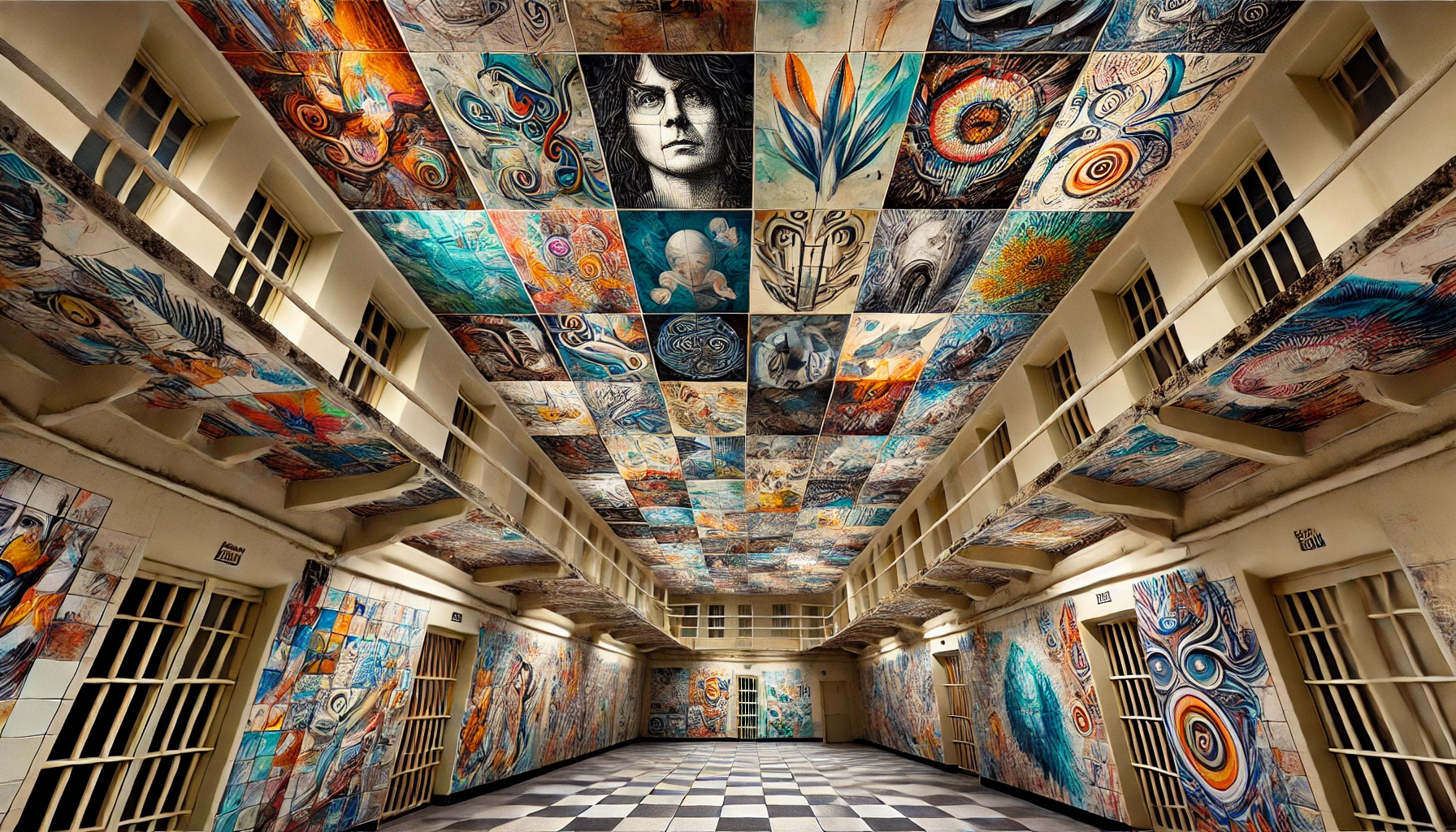When you think of art, you probably imagine expansive galleries or famous masterpieces hanging in prestigious museums. But what if I told you that one of the most fascinating pieces of art came from an unexpected place—inside the walls of a prison? Today, we’re diving into the captivating world of tile ceiling tile art created by the mysterious prisoner B-34897. This story blends creativity, resilience, and a unique form of self-expression, all from a place where freedom is at a premium.
The Intriguing World of Tile Ceiling Art
What is Tile Ceiling Art?
Picture this: instead of canvases or sketchpads, inmates are using ceiling tiles to create art. Yes, tile ceiling art refers to artwork that’s actually painted or drawn on the surface of ceiling tiles. It’s an art form born out of necessity, where traditional materials are scarce, and the need for creative expression is immense.
Who is Prisoner B-34897?
While little is known about the personal details of prisoner B-34897, what we do know is that their art has captivated people both inside and outside the prison walls. The number may sound more like an identification code than an artist’s name, but it’s in this anonymity that the artwork’s mystique deepens. This prisoner turned their cell into a canvas and created beautiful tile ceiling art that has left people amazed.
Tile Art: A Creative Outlet in Confinement
Why Tile Art?
In prison, resources are scarce. So, ceiling tiles offer a unique opportunity for creative expression. Inmates like prisoner B-34897 turn these tiles into their canvas, allowing their artistic ideas to flourish. Tile ceiling art gives inmates a chance to escape mentally, if not physically, from their confined surroundings. This form of art symbolizes the human need for expression, even in environments that restrict freedom.
The History of Prison Art Programs
The concept of art in prison isn’t entirely new. Many prisons worldwide have art programs that allow inmates to channel their creativity, but prisoner B-34897’s choice of medium is particularly innovative. From pencil sketches to full-blown paintings, prisoners have long used art to communicate. However, using ceiling tiles as an artistic canvas takes things to another level. It turns an everyday object into something extraordinary.
The Story of Prisoner B-34897: An Artist Behind Bars
Who is Prisoner B-34897?
While details about prisoner B-34897 are shrouded in mystery, their art speaks volumes. The choice to remain anonymous reflects not just the conditions of their incarceration but perhaps a deeper desire to let their work speak for itself. We may never know their real name, but their ceiling tile art tells us all we need to know about their creativity, resourcefulness, and resilience.
Creating Art on Ceiling Tiles: An Ingenious Process
How do you paint on a ceiling tile while confined to a small space? Well, that’s where the creativity of prisoner B-34897 truly shines. The process likely involved scavenging materials—perhaps smuggling paint or even using makeshift tools like toothbrushes or pens to craft the designs. Each stroke on those tiles was an act of rebellion against the monotony of prison life, showing that no matter the constraints, art can flourish.
Themes and Symbolism in Prisoner B-34897’s Tile Art
Symbolism in the Art
Tile art is more than just an aesthetic choice; it’s symbolic. Prisoner B-34897’s art often reflected themes of freedom, isolation, and the yearning for redemption. Each tile, meticulously crafted, told a story—one of longing, one of escape, if only through the imagination. The contrast between the cold, impersonal prison environment and the vibrancy of the tiles created a powerful juxtaposition.
Artistic Style: Unique and Bold
The artistic style of prisoner B-34897 could be described as a mix of abstract and realism. The tiles might have depicted soaring birds, representing freedom, or intricate mazes symbolizing the entrapment of incarceration. Each tile had its own theme, yet when viewed together, they formed a cohesive narrative of an artist seeking liberation.
The Impact of Prisoner B-34897’s Tile Ceiling Art
Influence on Fellow Inmates and Staff
Art has the power to inspire, and prisoner B-34897’s tile ceiling art did exactly that. Inmates found hope and inspiration in the artwork, seeing it as a reminder that beauty and creativity can exist even in a restrictive environment. Prison staff, too, recognized the significance of the tiles, often expressing admiration for the depth of emotion and skill captured in the art.
Recognition in the Outside World
Although the art remains confined to the prison physically, it has reached audiences beyond the walls. Word of prisoner B-34897’s tile ceiling art spread, gaining recognition in the outside world. Exhibitions featuring prison art and online galleries have highlighted B-34897’s work, shedding light on the creativity that often goes unnoticed behind bars. This recognition also challenges public perceptions of prisoners, emphasizing their ability to contribute artistically and meaningfully.
Prison Art as a Tool for Rehabilitation
The Role of Art in Rehabilitation Programs
Art serves as more than just a creative outlet; it plays a crucial role in rehabilitation. Many prisons offer art programs that help inmates reconnect with themselves and reflect on their actions. For prisoner B-34897, creating tile ceiling art might have provided an important sense of purpose and personal growth. Art has been shown to reduce recidivism, as it allows inmates to engage in positive self-expression.
A Case Study: Prisoner B-34897’s Journey
In the case of prisoner B-34897, the process of creating tile ceiling art could be seen as a form of personal transformation. The tiles allowed them to tell their story—one of resilience and creativity under extreme circumstances.
What’s Next for Prison Art?
Is Tile Ceiling Art a Growing Trend?
Interestingly, tile ceiling art is gaining attention beyond just prisoner B-34897’s contributions. With more art programs being implemented in prisons worldwide, it’s possible that this unique form of expression may catch on. Could we see exhibitions dedicated solely to ceiling tile art? The future looks promising for this niche art form.
How Prison Art Changes Perceptions
Prison art, especially unique forms like tile ceiling art, shifts public perception about inmates. It forces us to confront the idea that talent, creativity, and human expression aren’t confined by bars. Art like prisoner B-34897’s reminds us that no one is ever truly “forgotten” when their work leaves a lasting impact on those who see it.
Conclusion: The Lasting Legacy of Prisoner B-34897’s Art
In the end, tile ceiling tile art prisoner B-34897 shows us that even in the most restrictive environments, creativity can thrive. Their legacy lives on in those carefully crafted tiles, reminding us that art is a powerful tool of expression, hope, and even rebellion. So the next time you look up at a ceiling tile, maybe, just maybe, you’ll see more than just a square slab—you’ll see a canvas waiting for a story.





